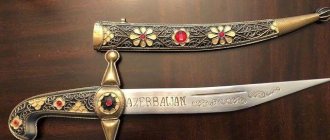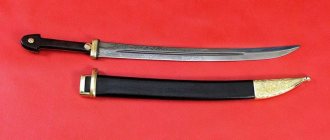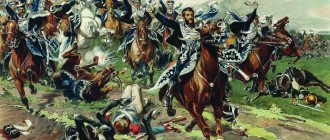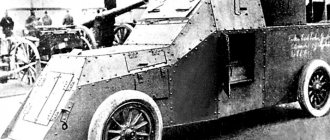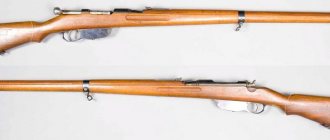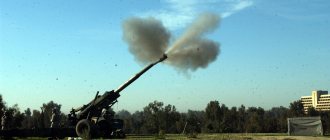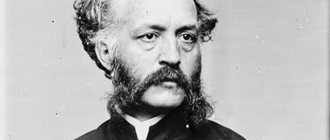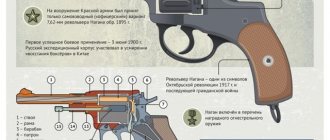What is our life? A game!
Ivan the Terrible, being one of the most controversial Russian tsars, amazed his contemporaries not only with his methods of governing the state, but also with his hobbies. It is known that the sovereign was seriously interested in astrology, compiled maps of the starry sky and believed that the heavenly bodies were capable of predicting a person’s fate. Another activity that brought genuine joy to the king was playing chess.
The death of Ivan the Terrible at chess. Artist Petr Tsepalin - Source: pinterest.ru
It is curious that back in the first half of the 16th century they tried to ban chess in Rus', and the associates of Ivan IV, Metropolitan Macarius and the author of Domostroi, Archpriest Sylvester, advocated for this. The latter dubbed the game “demonic” entertainment and sent curses on everyone who sat down at the chessboard at least once in their life. However, even the threats of his confessor did not stop Ivan Vasilyevich. The Tsar not only enjoyed playing chess himself, but also invited the main guardsman, Malyuta Skuratov, as well as Ivan Glinsky and Boris Godunov, who, however, could not surpass Ivan the Terrible in such an intellectual game, to share the game with him.
According to one version of the death of Ivan IV, the autocrat died playing chess. According to the Englishman Horsey, who left memories of Muscovy, on that fateful day of March 28, 1584, Ivan Vasilyevich could not place the king’s piece on the board - it kept falling. When the king completely lost consciousness, the remaining figures fell to the floor with a roar. Isn't this an omen of the Time of Troubles?
Characteristics
As a rule, the blade of a checker was made of high-carbon steel that underwent special heat treatment. Sometimes there are samples made of Damascus steel, but as a rule these are premium samples. Individually, officers of cavalry and Cossack units ordered sabers with damask blades.
Caucasian samples are characterized by a slight bend in the blade, while Turkestan checkers have a more pronounced bend. Fullers were made on the sides of the blade; if there were several of them, then the one with the larger width was located closer to the cutting edge.
Checkers were produced in large quantities, and in the serial version, engraving was not applied to the blade. The handle was made of wood, using overhead mounting, and impregnated with special bitumen-based varnishes. To strengthen the handle, it was fastened with brass rings.
The standard Cossack saber had the following dimensions:
- Blade length - 813 mm
- Butt thickness - 6-7 mm
- Blade width - 27-37 mm
- Total length - 953 mm
- Weight - 800-900 grams.
Clear falcons of the Quiet King
Despite his entrenched nickname, Tsar Alexei Mikhailovich was a gambling man. Just look at his love for falconry, which was known far beyond the royal court even during the Tsar’s lifetime. The ruler himself characterized himself as a “reliable hunter,” that is, real, skillful and knowledgeable.
Falconry of Tsar Alexei Mikhailovich - Source: upload.wikimedia.org
The secretary of the Holstein embassy, Adam Olearius, who left notes on the Russian state of the 17th century, noted that the hunting birds were kept by Alexei’s “uncle,” boyar Boris Ivanovich Morozov. He instilled in his pupil a love of falconry. In addition, the young king understood that this hobby in the eyes of his subjects was traditional for the sovereign and worthy of his high title. True, in contrast to the more usual animal hunting, Alexey chose something more refined: here skill was determined not only by the trophies obtained, but also by the training of the bird of prey, the beauty and scope of its flight.
Education and training of birds, as well as the organization of falconry, cost the treasury 75 thousand rubles a year - an incredible amount at that time! No one except the Tsar himself could enter the territory of the falconry yards without special permission, and Alexei Mikhailovich transferred the management of the entire hunt to the jurisdiction of the Order of Secret Affairs. Often, by the will of the tsar, falconers went with an embassy to distant countries and presented gifts to foreign rulers: Russian birds were always highly valued, and losing a falcon was considered a terrible crime.
In Moscow, entire areas were dedicated to falconry. In addition to the most important one, rightly called Sokolniki, in the middle of the 17th century the Romanovs owned the villages of Pokrovskoye, Izmailovo, Semenovskoye and Cherkizovo. In 1661, Alexei Mikhailovich ordered the construction of another summer palace on the right bank of the Yauza. There was also a vast field for falconry, since the proud birds needed open space, and felt helpless in the forests.
Royal Doctor
Having visited European countries during the years of the Great Embassy, Peter I returned to his homeland not only with the desire to create a powerful fleet and radically change the life of his subjects, but also with a keen interest in medicine, especially dentistry.
Peter the Great performs tooth extraction - Source: vialdenta.ru
While in Holland, the king attended lectures on anatomy at the University of Leiden, learned to open abscesses, make surgical incisions and bandage wounds. According to the memoirs of contemporaries, Peter I eventually became so skillful in treating teeth that he tried to test the acquired skill on literally everyone - from courtiers to ordinary residents of the capital.
The sovereign even constantly carried with him two sets of instruments: a mathematical one and a surgical one with dental forceps. The Kunstkamera (the first museum founded by Peter the Great) still contains the “Register of Teeth,” which was removed personally by the Tsar. The number of “exhibits” exceeds 60 pieces!
Diagram of the Kunstkamera building - Source: upload.wikimedia.org
It is worth noting that before Peter, dentistry actually did not exist in the Russian state. There were only so-called dentists, specialists capable of removing teeth and placing primitive fillings. However, people did not trust them too much. The situation began to change when Peter the Great, seized by a new hobby, brought the Dutch doctor N.L. to Russia. Bidloo, who became the first head of the Moscow Hospital School. In 1718, the tsar opened an “instrument hut” for the manufacture of surgical instruments, including dental ones.
Scimitars
They are placed in a separate category because they are not full-fledged oriental sabers due to the fact that, according to legend, they originate from a knife. When the Sultan forbade the elite of the army, his Janissaries, to carry weapons in peacetime, they began to carry knives.
And since combat knives were long, they gradually evolved into scimitars.
Currently, a number of scimitars are exhibited in museums; they have a rather characteristic curved leaf-shaped blade, sharpened inward. The handle is in the form of a bud, with a beak, without a hint of a guard or cross.
The dimensions of the scimitar also do not reach a full-size saber. Thus, the combat scimitar of Sultan Suleiman I has a total length of only 60 cm, with a blade length of 470 cm. Weight is about 600 grams.
War scimitars of late times had a length of up to 80 cm.
A hussar's saber, a meter long, with a blade of 88-90 cm and weighing about 1.2 kg, is superior to a scimitar.
A soldier with the soul of an artist
It is known that the future Emperor Nicholas I was not prepared to rule the state - he was the youngest heir and, if not for the abdication of his brother Constantine in 1825, he would never have become a monarch. According to tradition, Nikolai Pavlovich received a military education, but there was a hobby in his life that, at first glance, had nothing to do with the army and navy.
Image of Nicholas I and Tsarevich Alexander Nikolaevich in the studio of the artist G. Villevalde - Source: hermitagemuseum.org
Since childhood, Nikolai loved to draw. First, he asked teachers to draw something on paper, and then he happily colored the drawing and gave it to someone close to him. At the age of seven, Nikolai Pavlovich began taking separate painting lessons, and his first teacher was the artist “on historical themes” I.A. Akimov, with whom the future ruler studied twice a week and made great progress.
Already in his mature years, Nicholas I will decide to master the art of engraving, and this time he will take lessons from O.A. Kiprensky (creator of the famous portrait of A.S. Pushkin). Having succeeded in this technique, Nikolai Pavlovich released a series of engravings “Uniforms of Russian troops”, carefully drawing out every detail of the military uniform: cuffs, collars, buttonholes. In addition, in 1829, the emperor created several watercolor works on the theme of the Italian Guard and pencil drawings depicting women in full cuirassier uniform.
Staff officer of the artillery team and sailor of the fin company of the Guards crew, 1844-1855. — Source: navyparade.mil.ru
One of Nicholas I’s favorite pastimes was creating sketches of uniforms for the Russian army with his own hands. The emperor's enthusiasm was so great that he could work on them day and night, refining and improving them. To do this, he even had to get acquainted with the basics of sewing and participate in the selection of fabrics and accessories for military uniforms. By the way, this hobby was also inherited by his son Alexander II, who made a significant contribution to changing the uniform of Russian soldiers and officers during the Great Reforms.
Saber and checker: so similar and so different
Without sufficient knowledge in the field of edged weapons, people often confuse sabers and checkers. However, it is obvious that these are completely different types of weapons, differing both in their design and in the various features of combat use. By now, both types of weapons have managed to move into the category of ceremonial models, but some issues related to them remain relevant. First of all, discussions continue about the potential of the two types of blades. Sometimes disputants try to figure out which type of weapon is better, although everything has already been determined long ago.
It should be remembered that under the names of sabers and checkers a variety of bladed weapons can be hidden. Both types of blades have come a long way over many centuries, resulting in the appearance of a large number of weapons with certain differences and a number of common features. It is probably for this reason that it is often not specific samples that are compared, but only their main features. However, such a comparison has both advantages and disadvantages.
Cold steel in the museum. Along the edges are sabers of different types. Photo Vitalykuzmin.net
Historical blades
It is believed that the first sabers were created by Turkic gunsmiths around the 7th century AD. This weapon was actually a modified broadsword, with a slight bend in the blade. The single-edged blade of a curved shape, having sufficient dimensions, was quite light, and thanks to this it showed certain advantages over the swords of that time. Such weapons were primarily intended for cavalry and in practice showed themselves to be a good tool for fighting foot soldiers.
At the turn of the two millennia, sabers became widespread and were used in the armies of different regions. The warriors of Ancient Rus' were among the first to master them, and then such weapons came to Eastern Europe and the Middle East. As they spread, sabers changed. New operators intended to use such weapons in different branches of the military and for different purposes, which led to one or another modification of the appearance, including significant ones.
The development of sabers, aimed at optimizing their characteristics for various tasks, continued until the 19th century. Gunsmiths tried different blade configurations, created new versions of the hilt, and also experimented with the dimensions and weight of the weapon. As a result, a great many varieties of sabers appeared, each with its own appearance. Moreover, some subclasses are similar to each other, while others differ so much that they cannot immediately be recognized as related.
Russian saber from the mid-18th century. Photo: Wikimedia Commons
Thus, European sabers of the New Age had a blade about 850-900 mm long and a bend of at least 30-40 and no more than 50-60 mm. Such weapons were used by infantry and cavalry. The navy, in turn, used the so-called. boarding sabers are weapons with a blade no more than 500-600 mm long and a powerful hilt that provides maximum hand protection. In general, a large number of historical varieties of sabers are known, which had certain differences due to the specifics of their use.
It is simply useless to list all the countries that were armed with one or another version of the saber. Such weapons were available in almost all armies that followed modern trends in weapons. Accordingly, sabers were regularly used on the battlefield and contributed to the course of many armed conflicts on almost all continents.
The first mentions of checkers date back to the 12th century, and again promising weapons were created by Turkic blacksmiths. As in the case of sabers, checkers subsequently developed and changed. The final appearance of the modern checker was established already in modern times. In the distant past, such weapons were used by some Caucasian peoples. Later, the saber came from them to the Terek and Kuban Cossacks. By the middle of the 19th century, such weapons officially entered service with some Russian structures. A few decades later, the saber appeared in the army, seriously displacing the saber. The role of the latter was significantly reduced, and in some cases it was now only a ceremonial weapon.
It should be noted that the replacement of sabers with checkers occurred only in Russia. Other countries continued to use existing saber designs, in some cases modifying and modifying them. Whether this was a consequence of the progressive views of the Russian command is a topic for a separate discussion.
American cutlass M1860. Photo Missouri History Museum / mohistory.org
Checkers managed to take part in all the major wars of the 19th century, and also found use in the battles of the last century. The last conflict with significant use of checkers - as well as bladed weapons in general - was World War II. By this time, the development of other types of weapons made blades, at least, not the most convenient and useful weapon. Subsequently, edged weapons finally passed into the category of ceremonial or award weapons without any chance of returning to their previous status.
Technical issues
During their existence, sabers and checkers were changed several times, which led to the emergence of a mass of subclasses and types of bladed weapons. As a result, direct comparisons between different samples can often be difficult. To simplify the search for an answer to the traditional question “which is better?” Often a comparison may be used not of specific samples, but of general features of the concept. For all its problems, such a comparison allows you to see the main differences between the weapons, and also understand why one of them gave way to the other.
By the time checkers were adopted in our country, European-style sabers were used - equipped with a relatively long blade with a significant bend. Such a weapon could have a total length of more than 1 m with a curvature of up to 50-60 mm. The weight of such a saber could exceed 1 kg. Most often, the saber was balanced in the middle of the blade, which made it possible to increase its chopping effect. Such weapons were intended for use by cavalrymen and foot soldiers of various types of troops.
Russian saber 1829. Photo Livrustkammaren / emuseumplus.lsh.se
The main feature of the saber, which distinguished it from weapons of older classes, was initially the bend of the blade. Due to this, the saber is capable of exerting both chopping and cutting effects on the target. During a slash, the bend causes the blade to literally slide across the target, resulting in a cut. An increase in curvature leads to an increase in cutting action, but at the same time reduces the cutting power. In sabers of different countries and eras, a similar balance of characteristics was used in their own way, which led to the appearance of weapons of different shapes.
Checkers of the 19th century were noticeably different from sabers, although they were to some extent similar to them. With the same dimensions and similar curvature - and therefore similar cutting and chopping action - they did not have a guard, and also differed in the configuration of the blades. The checkers usually did not have a pronounced point, but they did have a one-and-a-half sharpening. In addition, the center of gravity of the checker was shifted to the tip. Based on the speed and ease of use, the saber was often carried in a sheath with the blade up, which simplified the process of removing it and then applying a chopping blow.
One of the main differences between a checker and a saber is the method of its use in battle. The saber was intended both for striking and for protection from an enemy blade. This provided certain advantages, but to a certain extent made the fighter’s training more difficult. In the case of a saber, the use of weapons was reduced to piercing or chopping, while protection with a blade was not provided.
Checker handle 1846. Photo Livrustkammaren / emuseumplus.lsh.se
It was the ease of use, and therefore the ease of training a soldier, that became one of the reasons for the gradual abandonment of sabers in favor of checkers. Thus, a Red Army cavalryman had to master only four thrusts and three blows in different directions, after which he could effectively use his saber in battle. Full training in saber fencing would take much longer.
Logical replacement
At the end of the first third of the 19th century, in some army formations of the Russian Empire, the existing sabers were replaced with sabers. Further rearmament, however, was carried out quite slowly and took several decades. Only in 1881 was it decided to re-equip the bulk of the troops with checkers and replace sabers. The cavalry units, officer corps and artillery underwent rearmament. The number of sabers decreased sharply, and these weapons mainly retained their ceremonial role.
Different blades were intended for different types of troops, the configuration of which corresponded to the assigned tasks. First of all, the weapon differed in the length and curvature of the blade, as well as the number and location of the fullers. Different shapes and materials of handles were also used, although their shape, in general, was common to all samples. Later, new melee weapons were replaced several times, but the saber remained the main weapon of the cavalry.
The reasons for the gradual abandonment of sabers in favor of checkers are well known. Already in the middle of the 19th century, it became obvious that the main weapon of modern armies is firearms, and cold weapons now play a secondary role. Even when close, infantrymen had to use rifles and bayonets, and so the need for long-bladed weapons was reduced. At the same time, the cavalry still needed such means, and the specifics of its combat work made it possible to do without fencing skills. As a result, they decided to equip the cavalry, and after it other types of troops, with a saber that was easy to manufacture and master and fully met the existing requirements.
Checkers at the Victory Parade 1945. Photo: Wikimedia Commons
What's better?
When studying different types of weapons, the expected question always arises: which one is better? In some situations it does not make sense, while in others the wording of the question is more correct, taking into account the conditions for using weapons. This is exactly the situation when comparing a saber and a checker. And if we take into account the requirements, application features and other factors, it turns out that both classes of weapons are good in their own way.
The saber appeared many centuries ago, when the main weapon of a soldier was a long blade. With the help of a saber, it was possible to deliver various blows, and in addition, it helped to block or repel an enemy attack. The saber in its various forms was used in the infantry, cavalry and navy. By changing the configuration of the weapon, it was possible to obtain maximum combat effectiveness in the given conditions.
However, to effectively use his weapon, the fighter had to spend a lot of time on training. Preparing a swordsman capable of attacking and defending was a complex and lengthy process. This situation persisted for several centuries, until the emergence and widespread dissemination of fundamentally new weapons and related tactics.
Now long-bladed edged weapons of the army can only be seen at parades. Photo by the Russian Ministry of Defense
By the beginning of the 19th century, firearms were firmly established on the battlefield, and by the end of that century they had become the main weapon of all developed armies. Melee weapons, including sabers, faded into the background. In such a situation, lengthy training of a soldier in handling blades simply did not make sense: he should have been taught to handle a rifle, which led to obvious consequences. Edged weapons retained their potential only in the cavalry, whose combat work had its own characteristics. In addition, it could be used in some other structures that are not directly related to an open clash with the enemy army.
In the conditions of a sharp reduction in the number of battles with melee weapons, cavalry and other types of troops were able to choose weapons that were easier to produce and use. They became checkers of several varieties, which entered service at the end of the 19th century.
It is not at all difficult to notice that sabers and checkers were used at different times and under different conditions. This allows us to assert that both of these classes of edged weapons have sufficient characteristics and are optimal for their conditions. While blades dominated the battlefield, the cutting saber remained in service, and the difficulty of mastering was compensated by the results of its use. In the future, the command considered it beneficial to switch to the checker.
The evolution of edged weapons lasted many hundreds of years and led to the emergence of a wide variety of models for various purposes, differing in characteristics and capabilities. During these processes, gunsmiths from different eras and countries created a great variety of sabers, which remained in service until the recent past. However, in the case of the Russian army, sabers eventually gave way to checkers. Conditions changed, and the soldiers needed different weapons.
Based on materials from the sites: https://zonwar.ru/ https://swordmaster.org/ https://militaryarms.ru/ https://popmech.ru/ https://forum.guns.ru/
